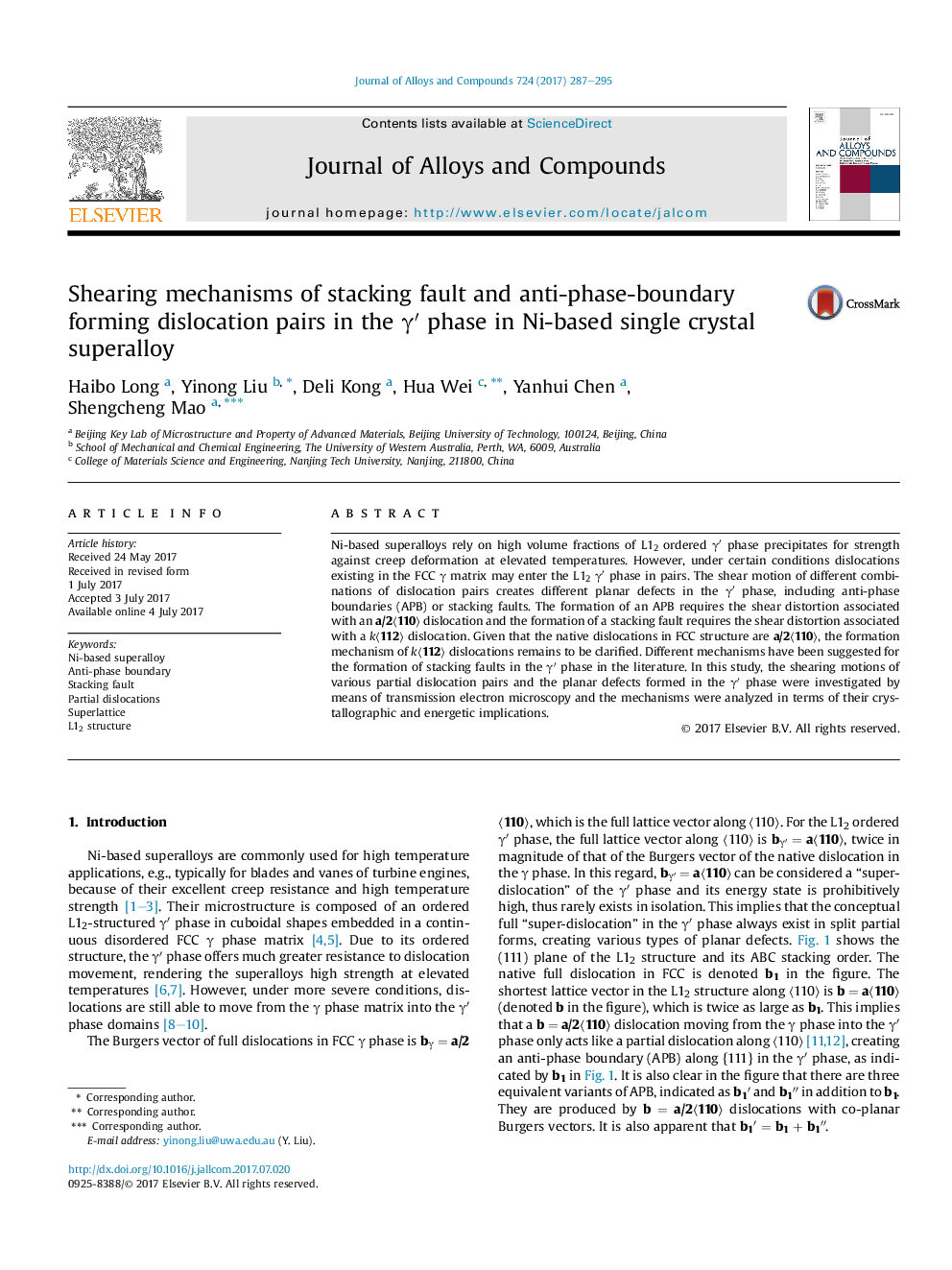| Article ID | Journal | Published Year | Pages | File Type |
|---|---|---|---|---|
| 5460095 | Journal of Alloys and Compounds | 2017 | 9 Pages |
Abstract
Ni-based superalloys rely on high volume fractions of L12 ordered γⲠphase precipitates for strength against creep deformation at elevated temperatures. However, under certain conditions dislocations existing in the FCC γ matrix may enter the L12 γⲠphase in pairs. The shear motion of different combinations of dislocation pairs creates different planar defects in the γⲠphase, including anti-phase boundaries (APB) or stacking faults. The formation of an APB requires the shear distortion associated with an a/2ã110ã dislocation and the formation of a stacking fault requires the shear distortion associated with a kã112ã dislocation. Given that the native dislocations in FCC structure are a/2ã110ã, the formation mechanism of kã112ã dislocations remains to be clarified. Different mechanisms have been suggested for the formation of stacking faults in the γⲠphase in the literature. In this study, the shearing motions of various partial dislocation pairs and the planar defects formed in the γⲠphase were investigated by means of transmission electron microscopy and the mechanisms were analyzed in terms of their crystallographic and energetic implications.
Keywords
Related Topics
Physical Sciences and Engineering
Materials Science
Metals and Alloys
Authors
Haibo Long, Yinong Liu, Deli Kong, Hua Wei, Yanhui Chen, Shengcheng Mao,
